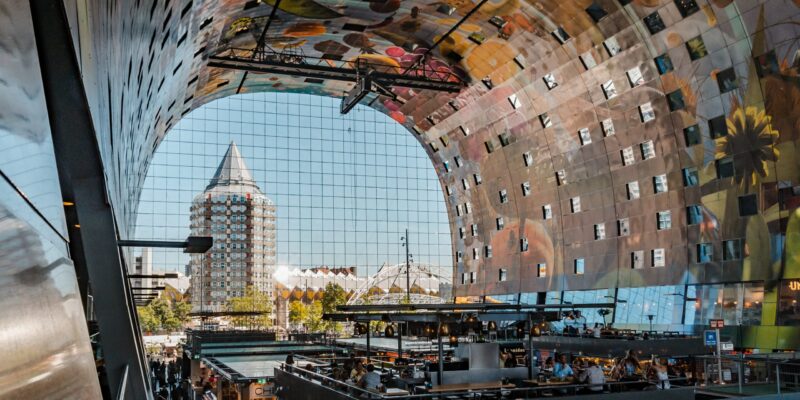Circular procurement: lever or barrier for a sustainable business?

Mirjam Kibbeling, expert in circular leadership and lecturer in public procurement, knows better than anyone what the importance of circular procurement is: “If you get it right, procurement can be the lever for the circular impact of your organisation” She also warns: buyers can (unintentionally) block opportunities. Mirjam explains how to prevent that.
Current roles of Mirjam Kibbeling
- Lecturer in Public Procurement for five universities of applied sciences (2022 – present). In collaboration with the central government and ive universities of applied sciences, Mirjam puts Public Procurement on the map, including through practical research.
- Director at Nevi (2020 – present). Nevi is the Dutch association for procurement and supply management. Mirjam is responsible for the Education and Research portfolio.
What are the core principles of circular procurement?
“Circular procurement is an organisation-wide process. Firstly, the client formulates a demand based on a need. In collaboration with the supplier, the client then procures, often with support from the procurement department.”
“The supplier then provides the product or service for the duration of a contract. After the term of the contract, when the product in its current form is no longer used by the client, the components of the product remain in the loop.”
You said that circular procurement works the same way as a lever. How does this work?
“Depending on the sector you are in, your organisation outsources between 20 and 90% to other organisations. That is 66% on average. That outsourcing includes everything that is under contract or for which you receive an invoice. From printing paper to lease cars and from cleaners to consultants. Only 33% of a budget goes to your own organisation, to salaries for example. So with procurement, you achieve twice as much as with your own people. Isn’t that a lever?”
“More and more companies, organisations and individuals automatically end up with procurement out of social ambitions. They realise they can only achieve sustainability through their suppliers. But procurement is about more. Ask yourself whether you should buy anything at all, which materials are most suitable and whether you want to own or rent something. From the budget holder to the lawyer: everyone in the organisation is involved. Circular procurement touches your whole organisation and that too makes it so important.”

If an organisation buys circularly, is it automatically doing the right thing?
“Those who procure circularly deserve credit. Still, we need to talk about the distinction between realised and potential circular impact. Realised impact is high if you buy circularly, use circular materials, maintain products properly and reuse them in a new function. However, some products only carry potential circular impact. Think of office furniture. You easily extend the lifespan of that with repair. But if you just throw away a chair with broken upholstery, you have therefore not achieved circular impact.”
“You can also see the difference between potential and result very well in ICT equipment. As a purchasing party, you can insist on choosing phones with a longer lifespan. But if the ICT policy is to replace electronics after two years, so your contract is not used. You have to apply the agreements in your contract and use them in practice: the proof of the pudding is in the eating.”
“If you understand this, you also understand that making procurement circular is not your primary goal. Rather, you want to use procurement, the lever, to become circular as an organisation. There is a substantial difference between the two.”
And how about the barrier?
“In conversations about tenders, I notice that clients often still approach circular procurement as a barrier, as an obstacle. For them, it is a lot of hassle to formulate everything and weigh up the bidders. The procurement function within an organisation is not often seen as a lever for the circular transition.”
“Procurement can come across as intrusive and obstructive if the client has already figured out exactly what it wants. As a purchaser, you’d rather not be the barrier , or the procedural intermediate step that colleagues often don’t want.”
“Do you want procurement to work as a lever? Then make sure you are involved earlier in the process and formulate the right question. In doing so, you will in fact give space to creative, circular answers.”
How can we make chains more sustainable together?
“Out of the National Circular Economy Programme and the European Green Deal, you can already see that the public purchaser is getting a role with more importance. Namely, governments are given the opportunity to develop, stimulate and change markets from their role as lead customer.”
“How that works? For example, if the central government issues a call for tenders for hundreds of thousands of circular desks, that opens up a market for this product. Opportunities arise to gradually fulfill that circular need. Other organisations benefit by buying those new products as well.”

Finally, do you have any tips for circular procurement?
“At the course where I teach, I see that people sometimes feel alone when they want to start circular procurement. There is not always enthusiasm among colleagues. It helps if you form a group with people who do want to participate: a coalition of the willing. That way you motivate each other and take the first steps.”
“My second tip: start with a specific category or product group. For example, a category you think is important, low-hanging fruit or something where there is a risk for the organisation. Any start is a good one. Third: take action! Don’t have endless discussions about whether to change from the top down or the bottom up, but start small with the people who want to.”
“Finally, I would like to pass on that the circular transition is still at an early stage. So circular procurement is a road of trying, experimenting, adapting and learning. Within the Circular Procurement Acceleration Network, we are working on the circular future. Together we are looking for the right words and good examples.”


